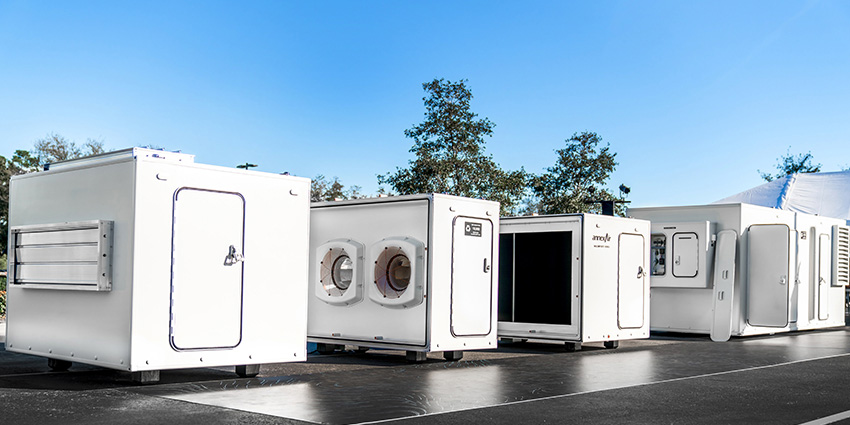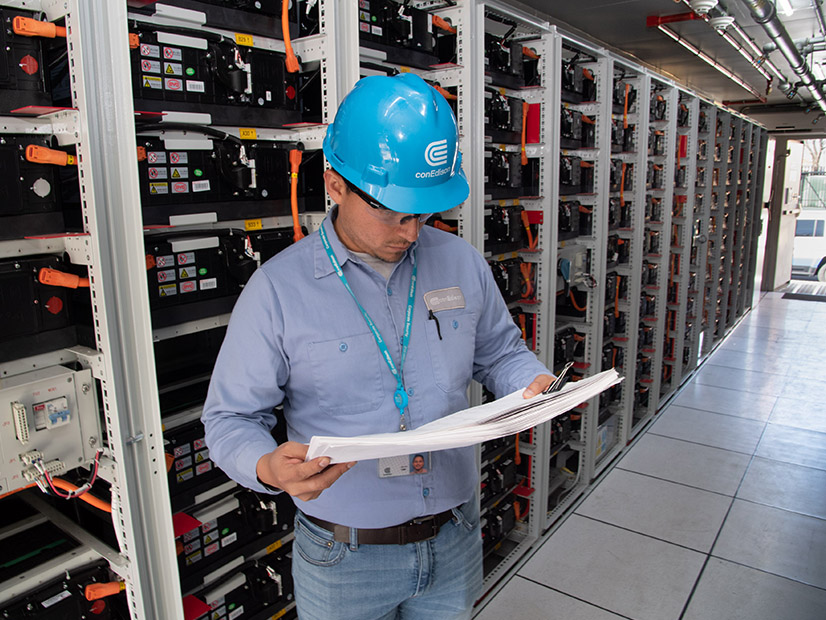The New York Public Service Commission on Thursday held the first of several public stakeholder meetings to refine the rules governing energy service companies (ESCOs), including the regulatory treatment of green gas in product bundles (15-M-0127).
The PSC and Department of Public Service staff led the so-called “Track II” session to improve state regulation of the industry by defining what constitutes a small, nonresidential energy customer; identifying the products and services likely to benefit customers; and making the calculation of pricing and value transparent for customers.
The commission has been working since 2014 to balance the idea of free markets and free choice with accountability for unscrupulous business practices. ESCOs have lured customers with offers ranging from frequent-flyer miles and casino trips, to new, more efficient HVAC systems.

Prior to its December 2019 order cracking down on ESCOs, the PSC held hearings before two administrative law judges, the transcripts of which totaled thousands of pages. (See NYPSC Reins in ESCOs, Expands Community DG.)
The current Track II collaborative process will have no ALJs assigned to it, so DPS staff will have to “determine what we can or should do with respect to discovery,” DPS assistant counsel F. Thomas Dwyer said. “But to the extent proposals are filed for commission consideration, those would need to be pretty transparent and clear for not only the commission but for all interested stakeholders.”
Among the stakeholders at the meeting was Richard Berkley, executive director of the Public Utility Law Project of New York. “To what extent in evaluation of potential or submitted value-added products and services will [DPS] staff be examining how much their product or service lowers the cost of energy to the consumer or how much it raises it?” he asked.
The three recent commission orders on the subject has made it clear that pricing is key, Dwyer said. As to determining what products provide value to customers, the default has been the “guaranteed savings rule,” which stipulates that a product or service must save an electric or gas customer money compared to their regulated utility bill.
The PSC also has authorized products that may be more expensive but provide additional value streams to customers, such as a fixed-rate or home warranty product, he said. ESCOs also offer green energy deals such as natural gas or electricity bundled with either a carbon offset component or a renewable energy credit (REC) purchase component.
It’s important for the state to review data on these products and understand what the value proposition is to consumers, “so I think discovery would be helpful to establish that so parties can ask questions and just make sure we fully understand these products that are being proposed,” said Kathleen O’Hare, senior attorney at the DPS’ Utility Intervention Unit.
Defining Limits
It’s important not to have a “broad understanding or limitation” as to how a certain home warranty product might apply to a certain sector, attorney Natara Feller said.
A product that focuses only on insurance for hot water heaters and furnaces may not be as attractive to renters, and all customers have varying situations and interests in different products, “so we wouldn’t be excluding it from any customer segment on that basis,” Dwyer said.
The Track II proceeding has two potentially contradictory issues for utilities, said Josh Pasquariello, manager of customer choice at National Grid.
Concerning value-added products, “we probably have to figure out how to separate those from supply charges, which might be an issue for our billing systems if we’re not set up to do that as yet. On the flip side of that, we wouldn’t want charges on those value-added products necessarily rolled up into the supply charges because we wouldn’t want to pay POR [purchase of receivables] on insurance to help cover a water heater; we’d only expect to pay POR on the supply itself,” Pasquariello said.
In a POR program, the utility purchases the receivables of an ESCO at a discount rate equal to the utility’s actual uncollectible debts.
Are ESCOs going to pay less than 100% of the cost of modifying the utility billing platform for more transparency? Berkley asked.
The commission already directed the utilities to start working on some of the changes that may be necessary to improve transparency, but there was no directive to have ESCOs specifically fund those changes, Dwyer said.
Regarding what constitutes a small, nonresidential customer, several stakeholders felt that the 750-dekatherm threshold is too high for a gas customer, and that determining an electric customer by meter type was inappropriate. The electricity definition should be volumetric and not based on the meter classification, which would also be consistent with other commission rules and those in other states, said Jeff Donnelly, director of regulatory affairs at Family Energy.
Green Gas
The clean energy proposals submitted last year generally fell into two categories: a carbon offset product or a REC product, Dwyer said.
The former was set up to offset a percentage of the customer’s natural gas usage by purchasing carbon allowances from the Regional Greenhouse Gas Initiative. The REC products proposal would offset a customer’s natural gas usage by purchasing and retiring RECs or making alternative compliance payments to the New York State Energy Research and Development Authority.
“On tracking of the carbon offset products, we’ve been offering this type of product for several years, and we track it internally and we audit internally, so it could simply just be an annual reporting requirement to commission staff on how many customers are on that product and confirming and validating the proper amount of purchase of carbon offsets,” Donnelly said.
Dwyer responded that staff were more concerned with the calculation itself, which could be addressed in later hearings.
The DPS slideshow asked whether green gas products would encourage customers to use more gas, to which Angela Schorr, NRG director of regulatory affairs, said they “found it actually the opposite.”
NRG’s Green Mountain Energy is a renewable brand “that’s been offering 100% renewable electricity for years, and we actually started offering green gas because … customers that already have gas are looking to do something about it … like how can they help the environment even though they are using gas.”
The DPS is focused on offsetting gas usage, Dwyer said. “We really didn’t see a ton of proposals to specifically provide customers with renewable natural gas or an alternative.”



